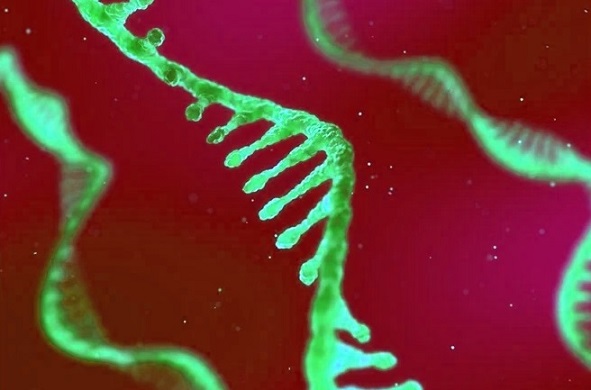SARS-CoV-2 Replication Hijacks Human Cells with Hidden RNA Tricks That Boost Its Survival
Nikhil Prasad Fact checked by:Thailand Medical News Team May 30, 2025 5 months, 1 week, 4 days, 32 minutes ago
Medical News: Scientists Uncover the Hidden Machinery Coronaviruses Use to Multiply and Outsmart the Immune System
A team of researchers from Coventry University and OVO Biomanufacturing Ltd in the United Kingdom have released a groundbreaking review that unveils the complex inner workings of how coronaviruses, including SARS-CoV-2, replicate and evolve inside human cells. Their study sheds light on the powerful tools these viruses use to make copies of themselves and dodge immune defenses—strategies that may also be key to their unpredictable behavior and severity in different patients.
 SARS-CoV-2 Replication Hijacks Human Cells with Hidden RNA Tricks That Boost Its Survival
SARS-CoV-2 Replication Hijacks Human Cells with Hidden RNA Tricks That Boost Its Survival
Led by Rory Williams, Jack Hales, William Collier, and Phillip Gould, the team has pieced together decades of coronavirus research with new insights gained during the COVID-19 pandemic. This
Medical News report explores how these viruses use a unique replication strategy involving not just standard genetic copying, but also the creation of unusual genetic fragments known as subgenomic RNAs and defective viral genomes (DVGs).
The Replication Process Inside Our Cells
Once a coronavirus enters a human cell, it releases its genetic material, a large single-stranded RNA. This RNA behaves like a message written in a code that the host cell's machinery reads to make the building blocks the virus needs to replicate. However, unlike simpler viruses, coronaviruses set up intricate replication organelles—special compartments inside cells—where they safely copy their RNA, hidden from the immune system.
In these secluded replication bubbles, the virus produces its main genome as well as subgenomic RNAs (sgRNAs), which are shorter pieces used to make essential viral proteins. It also creates defective viral genomes—mutated or rearranged pieces of genetic material that can no longer produce a full virus on their own but still play a role in viral replication and immune response.
Subgenomic RNAs and Viral Tricks
Coronaviruses use a method called “discontinuous replication” to create their sgRNAs. This process involves jumping between different regions of the genome during replication, creating nested sets of RNA instructions that can still make key proteins. These jumps are carefully guided by signals within the virus’s RNA, including specific sequences called transcriptional regulatory sequences (TRS), which help align the copying process.
What makes this even more fascinating is that coronaviruses can manipulate the strength and timing of these jumps using RNA structures and interactions between distant parts of the genome. This lets them balance the production of various proteins and respond to different conditions within the host.
Defective Viral Genomes Add a Dangerous Twist
One of the most unexpected findings discussed in the study is the role of defective viral genomes. While these fra
gments cannot make viruses on their own, they can interfere with the replication of normal virus particles. This happens because DVGs compete for the same resources and may even trigger immune responses earlier than normal viruses do.
Some DVGs may also accidentally help the virus by producing structural proteins or modifying how the immune system reacts. In lab settings, these DVGs have been shown to reduce the amount of infectious virus produced—leading some scientists to explore them as possible treatments that use the virus’s own machinery against it.
Researchers observed that SARS-CoV-2 produces more of these defective genomes than other coronaviruses like MERS, and this could be a clue to its rapid spread and varied symptoms in different people. For example, in asymptomatic patients, fewer viral particles and DVGs were found, while symptomatic patients had both high levels of virus and more DVGs, hinting at a complex interaction between these genetic scraps and immune responses.
Conclusions and Future Directions
This study shows that coronaviruses are not just passive invaders—they are sophisticated manipulators of human cellular systems. By producing sgRNAs and defective viral genomes through finely tuned processes, they can control replication, immune evasion, and possibly the severity of disease. Understanding these hidden mechanisms could lead to better therapies, not just for COVID-19 but also for other coronavirus-related illnesses.
Defective viral genomes, once thought to be irrelevant or accidental byproducts, are now seen as central to how the virus survives, spreads, and interacts with the human immune system. Future research may focus on how to harness these defective elements for therapeutic purposes or how to disrupt the virus’s ability to make them altogether.
The study findings were published in the peer reviewed journal: Viruses.
https://www.mdpi.com/1999-4915/17/6/767
For the latest COVID-19 News, keep on logging to Thailand
Medical News.
Read Also:
https://www.thailandmedical.news/news/breaking-covid-19-news-australian-scientists-discover-a-microrna-called-cov2-mir-o8-that-is-encoded-by-sars-cov-2-and-is-possibly-pathogenetic
https://www.thailandmedical.news/news/medical-alert-sars-cov-2-expresses-mirna:-vmir-5p-that-reduces-host-transcription-and-suppresses-host-genes,-increasing-its-pathogenicity
https://www.thailandmedical.news/news/latest-sars-cov-2-research-study-discovers-that-sars-cov-2-encoded-small-rnas-represses-host-expression-of-serinc5-for-viral-replication-
https://www.thailandmedical.news/articles/coronavirus
https://www.thailandmedical.news/pages/thailand_doctors_listings
